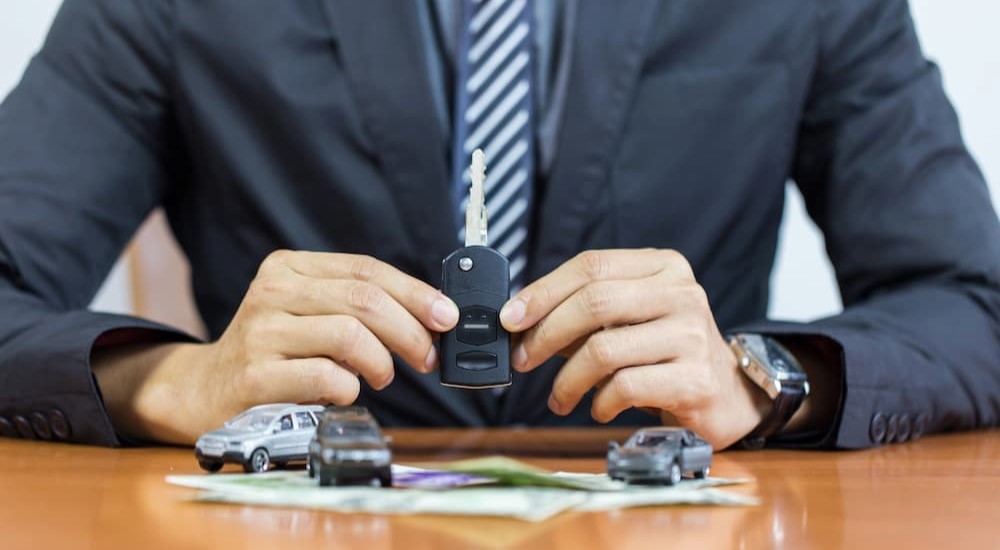When you’re interested in trading in your vehicle, many questions may flow through your mind, including, “How do I value my trade?” After all, you want to ensure you’re getting the most money for your car to put it towards a newer, better vehicle that meets your travel demands. If you’ve got questions, you’re not alone, especially when you want to make the most out of this process. Whether you’re wondering, “Should I trade in my car if it’s worth more than I owe?” or some other frequently asked questions, it’s time to get to the bottom of trading in your vehicle. Let’s take a look at some commonly asked questions to give you a better understanding before making this decision.
Should I Trade In My Car if It’s Worth More Than I Owe?
When your vehicle is worth more than you owe on it, you have positive equity in it. Having positive equity in a vehicle is a very good position to be in, especially if you’re looking to trade in your car. This means that this leftover money will be put towards your next vehicle, driving down your monthly payments and making it easier to afford the car you want for your travels. On the flip side, if you owe more than the car is worth, it’s not a great time to trade it in. This is called having negative equity in your vehicle. If you’re looking to buy a new car, this negative equity is typically rolled into your new vehicle loan if you can’t pay the difference outright.

How Is Vehicle Value Determined?
All vehicles depreciate, which means they lose value, especially within their first year on the streets. Although some vehicles tend to hold their value for a longer period of time, some vehicles can depreciate at a much faster rate. Knowing where you stand is important, especially when you’re interested in trading it in.
Helpful tools, like Kelley Blue Book, give you a more realistic idea of what your vehicle is worth based on factors like the year, mileage, trim, special packages, et cetera. This way, when you take it to a dealership, you have a better idea of what to expect. Although dealerships use their own tools to evaluate vehicles, it helps to be more knowledgeable about vehicle values, and it also helps if your vehicle is in good condition, so be sure to clean it up and maintain it before trading it in.
How Long Should You Keep a Vehicle Before Trading It In?
You may be wondering if there’s a certain mileage that dealerships like to see when it comes to the trade-in vehicles they’re interested in, but this isn’t actually the factor to consider when trading in your car. The amount of time you own your car and how many miles you put on it before trading it in varies between drivers; however, if you want to get the most money for it, waiting until you have positive equity in your vehicle is a good idea.
You may also seek to trade it in before your warranty expires or before any major service is required. Typically, experts recommend keeping your car for about three to four years before considering trading it in; however, if you’re in need of a better-suited vehicle for your lifestyle, it doesn’t hurt to stop by a dealership and see what they have to offer.
Does Trading In a Car Affect Your Credit?
If you’re concerned about your credit, you’ll want to be well-versed in how a vehicle trade-in will affect this important number in your life. Simply trading in a car won’t negatively impact your credit; however, when you apply for a loan for your next vehicle, the finance department will run your credit, which results in a hard inquiry.
This typically doesn’t affect your score too heavily, but it’s advised that prior to buying a car, even if you have a car to trade in, you work on your credit and try to pay off your debts as much as possible. Having a car to trade in helps with the overall process, allowing you to put the money you received from your old car toward your new purchase, helping you obtain more reasonable monthly payments.
What’s the Difference Between Market Value and Trade-In Value of a Car?
You may have dabbled on several vehicle valuation sites, gotten the market value for your car, and then been surprised that this value was different from the trade-in value you were offered. This is due to several reasons. For one, the market value doesn’t consider your unique vehicle, any modifications made to it, repairs needed, and so forth.
When you sell your car to a dealership, they take care of restoring it to its former glory, so if it needs quite a few repairs, expect a lower trade-in amount than the market may suggest. To increase your odds of being offered more money for your trade, it’s always a good idea to take care of your vehicle and keep up with routine maintenance services.
What Are the Steps to Trade In a Car?
As we mentioned above, it’s always recommended to understand what your vehicle is worth, which means that doing your research on market value is the first step. You’ll also want to figure out your budget for the vehicle you are trading your current vehicle in for so that you know what types of vehicles you can afford. If you’re not satisfied with what one dealership offers you, don’t be afraid to shop around and get multiple offers before making your decision. When you partner with a reputable dealership, however, you’ll be treated with respect and won’t have to worry about whether or not you received a fair price for your vehicle.
What Happens to a Car After It’s Traded In?
Dealerships are constantly looking for quality models to add to their used lots. After all, more drivers are seeking out used vehicles because they can get more for their money, which is why dealerships look for great trade-ins. If your trade-in vehicle is in good condition and desirable in the local market, it will be reconditioned and repaired so that it can take its place in the pre-owned inventory. If your vehicle is in bad shape, it may be auctioned off for parts or sold to someone looking to take on a refurbishment project.
Where Is the Best Place to Sell or Trade a Vehicle?
Dealerships are always the easiest, most convenient places to sell your car, even if you’re not looking to trade it in for a better model. Selling it on your own means taking time out of your schedule, marketing it to the right buyers, and then haggling over prices. It may take quite some time to sell a vehicle on your own, but when you work with a dealership, it’s all done in a timely manner. They take care of all the details for you, which is why so many drivers choose to go this route when selling or trading in their cars.
If you’re wondering about the value of your trade, it’s advised to chat with a local dealership and get the ball rolling with the process. This is especially true if your vehicle is worth more than you currently owe, meaning you’ll have more money towards a vehicle that better meets your travel requirements. When it comes to trading in a vehicle, going about this properly can make a real difference in your outcome, so do some research on your vehicle, take good care of it, and always team up with a dealership you can trust.






